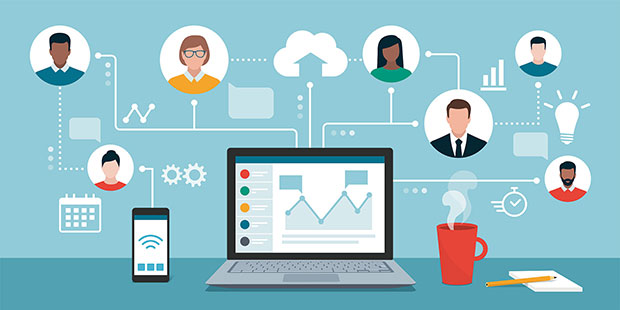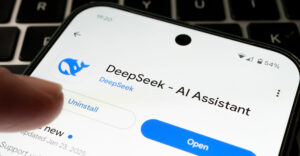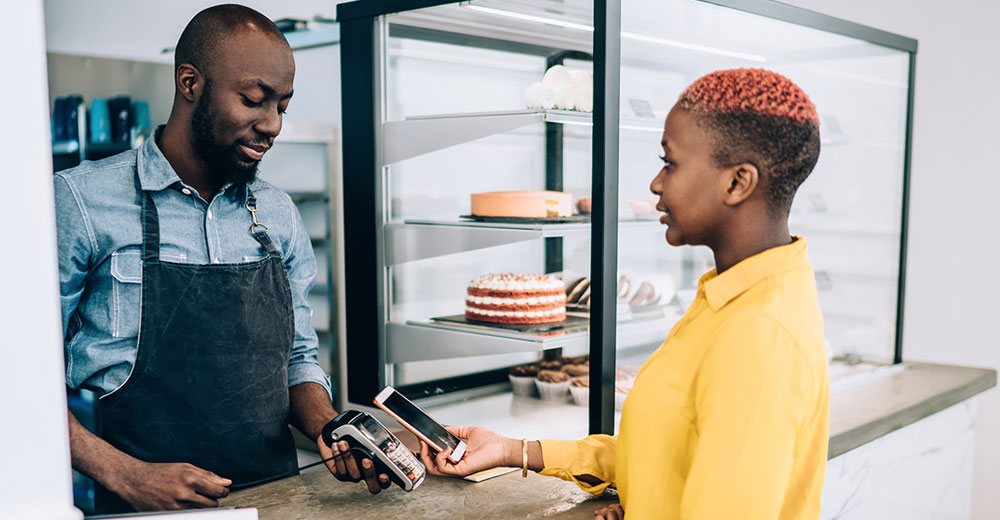Some of the corporate responses to COVID-19 make me incredibly happy I don’t work for a large company anymore. Some of the troubling reports from other companies include forced work in unsafe areas, not enough — or any — protection gear, massive layoffs and furloughs, and the sense that a critical mass of well-paid CEOs and politicians don’t get that many people live paycheck to paycheck.
If I were to focus on that, however, it would just get you and me depressed, and none of us need help getting depressed now.
There are exceptions, though. One company I follow stepped up, thanks to HR VP Tracy Keogh and CEO Enrique Lores. Of the responses I’ve reviewed so far, they stand out for moving aggressively to protect not only its employees’ lives but also their quality of life.
I’ll explore their approach and close with my product of the week: iProov, a facial recognition product that overcomes the problem of deepfakes without needing a special camera. It is being used to help with social distancing at scale for government and banking and would be useful for healthcare.
What Makes HP Different
HP is a vastly different company. It was split off from the old Hewlett Packard, and then-CEO Meg Whitman saddled it with the declining businesses and, most all, the combined firm’s massive debt. Those decisions almost immediately put the firm on deathwatch. I recall talking to one of the competing CEOs who thought then-CEO Dion Weisler got so excited about becoming CEO that he didn’t realize it was a death sentence.
However, he did know the risk. Starting in crisis forced the firm to rethink its operating policies and procedures, governance, employee measurement systems, and corporate rules. In effect, HP came close to tossing out everything and starting over, making the firm into one mammoth startup.
The result was a firm that was more focused on customer and employee care and less focused on making Wall Street happy than its parent was, and HP was far more agile as well. Internal communications were stronger, the focus on creating and maintaining trust was stronger, and employees had a far higher priority in terms of their care and feeding than previously had been the case.
One other difference was that Tracy Keogh took over as HP’s head of HR. Keogh has an MBA from Harvard and has seen 35 of her employees advance to lead other HR departments. This is important because it is rare to get this level of talent in HR. In many companies, HR is just a compliance organization led by executives who failed in some other part of the business.
The practice of placing underperforming executives in HR has never made sense to me, given that employees, not executives, are the ones responsible for a firm’s success. HP is now a showcase of what a firm can do when it has the right talent in HR and at the top of the company.
One of the other exciting things addressed at the split — something other firms are struggling with — is board diversity. HP is diverse at the top, not just at the bottom.
HP’s Execution
HP is a multinational with a substantial presence in China. Internally it generally knew what was going on when the virus outbreak was just starting and didn’t have to depend on the unreliable messages the rest of us were seeing. HP took the threat seriously early and moved to acquire personal protective equipment (PPE) and protect employees in a timely way. It has been able to shift its PPE reserves from country to country, ensuring that employees who do have to come to work are protected.
Employees working in hot spot areas were housed close to their factories to help protect their families. Anticipating the outbreak, HP brought an epidemiologist on board and set up several HP medical clinics to help ensure that executives were getting accurate information and that COVID-related decisions were well-informed.
The company’s geographic spread gave it real-time information both on how to manage the shift to working from home and how to prepare to bring some people back to the office. For instance, HP is already working on employee testing plans so it can quarantine aggressively during the next virus wave.
They also recognize that this COVID event isn’t a one-time thing, and it already has prepared for a new world in which many employees, if not most, will continue to work from home. This already has changed its hiring priorities. People who can’t relocate now are attractive candidates since they won’t be coming into the office anyway.
HP understood that people working from home would have unique problems. The company is helping employees with programs to keep kids engaged and learning. It is working on virtual summer camps focused on STEM education. Recognizing the critical nature of interns as seed corn for future hires, HP didn’t cancel the program — it virtualized it.
It has rolled out new training, toolsets, and frameworks for managers because it recognizes that managers are the critical link to ensuring operations, but many are untrained to manage highly remote staff.
It is fascinating and brilliant because even those of us who had formal training in management weren’t trained to deal with staff working at home and fearing for their lives and the lives of their families. Some of the management meetings even included the manager’s kids.
HP went beyond that with its nightly events. For instance, with the help of its partner DreamWorks, it implemented DreamWorks Fridays so employees and their families could enjoy movies together.
Another session featured David Rock, who has a professional doctorate in the Neuroscience of Leadership and serves as director of the NeuroLeadership Institute. His focus was on mitigating stress by helping people put words to their feelings.
There have been cooking classes, as well as financial planning classes (for those who still had finances left to manage). I wonder if having a homework club was wise. Kids have long memories.
Tracy and Enrique alternate updates to employees regionally. Employees can ask questions, which helps them feel connected to the leadership. It also informs them about what is going on, enabling employees to contribute to solving problems the executive staff is confronting.
Wrapping Up: Out of a Crucible of Fire, a Sparkling Example of Excellence
HP was formed out of conflict. Surviving a near-death experience forged a unique family of employees who were backed by strong management. Together, they stepped up to ensure that HP would emerge from this latest crisis successfully.
That level of employee care, engagement, and execution is unique in the U.S. market, and it is to Enrique Lores’ and Tracy Keogh’s credit that I know of no other company that has pivoted so well during this crisis.
It also is a credit to HP employees that they stepped up and together have functioned as a family. I think it is a shame that HP is the exception and not the rule, and my reason for writing about the firm this week is that I hope others will emulate its approach. This kind of incredible employee care will replace layoffs and furloughs as the preferred way of meeting troubled times.
I’ll close with this: Like you, I’ve heard the saying, “when given lemons, make lemonade,” and I, too, thought it was BS. No longer, because that is precisely what HP did — nicely done!
One of the big problems with so many employees, managers, and executives working from home is that their corporate security systems are not designed to prevent remote workers from phishing attacks. They can be contacted and fooled into thinking an attacker is a member of their company, even a top executive, and tricked into providing confidential information. We already know passwords and IDs aren’t secure. Hell, at IBM, we were alerting about passwords and IDs in the 1980s.
Facial recognition is compelling, but systems like Microsoft Hello require unique cameras that most folks don’t have, and regular facial recognition can be fooled with video files. More recently, these systems can be fooled with Deep Fakes that allow remote attackers to convince you they are someone they are not.
What makes iProov different is that it is a cloud-based facial recognition service that analyzes the light on the face to ensure the person you are seeing is a real person.
I expect this technology will eventually migrate into some of the widely used video conferencing platforms like Skype, which are being used widely during the COVID pandemic, to make sure these tools aren’t exploited to rip off companies and individuals.
One of the implementations is for border control so that a live person wouldn’t be required to validate someone coming into a country. (Border control agents are incredibly susceptible to becoming infected by a spreading virus.)
When it can be relied on, facial recognition is compelling as a second factor, but at this time, my main interest is in using it to automate people-facing jobs that place employees at high risk of infection to create a far safer world.
Because iProov solves a critical problem for healthcare, immigration, banking, people working from home, and security in general, it is my product of the week.
























































